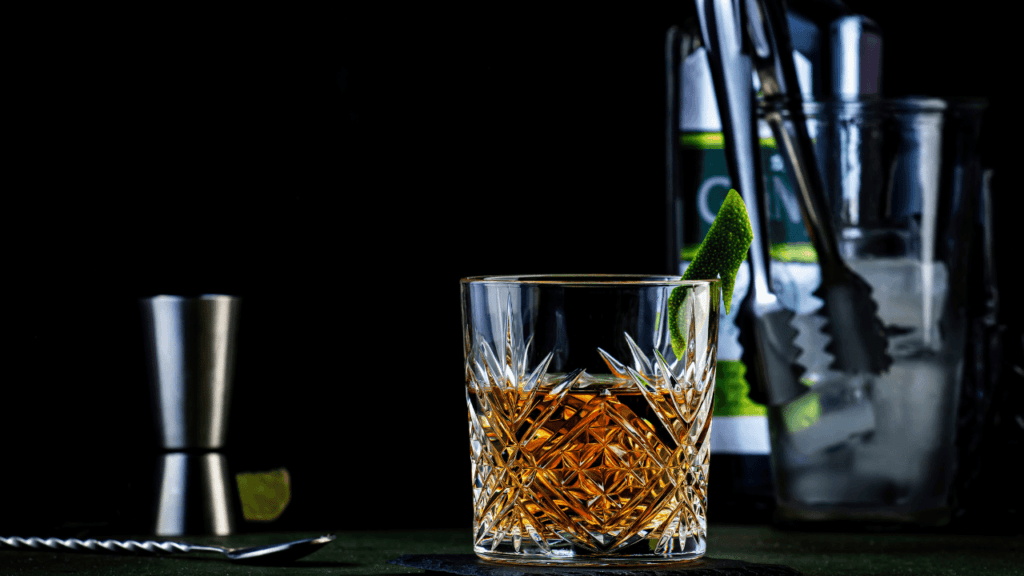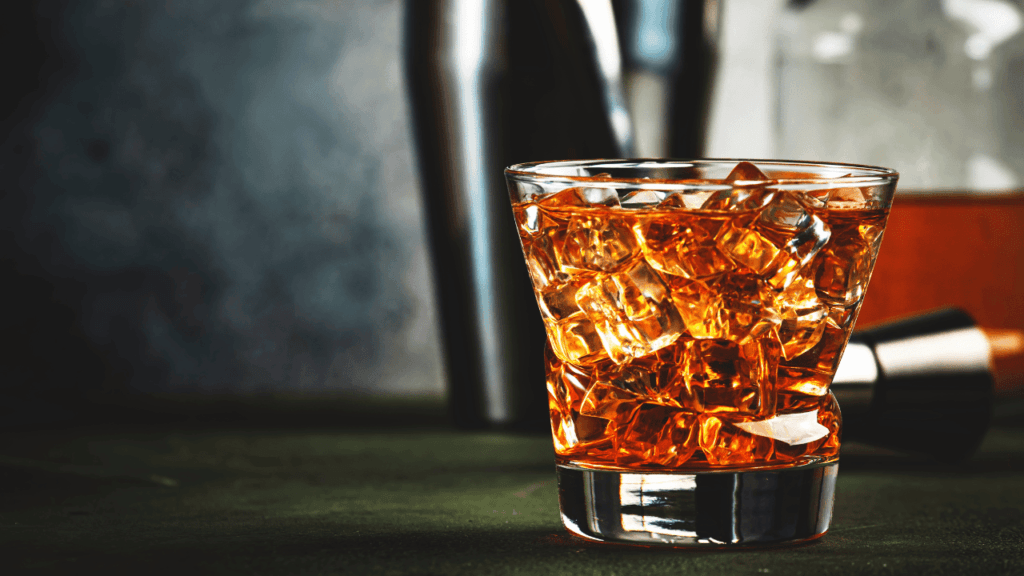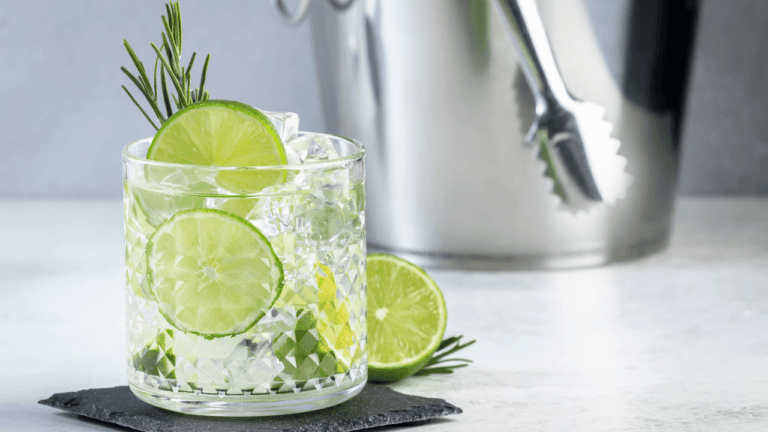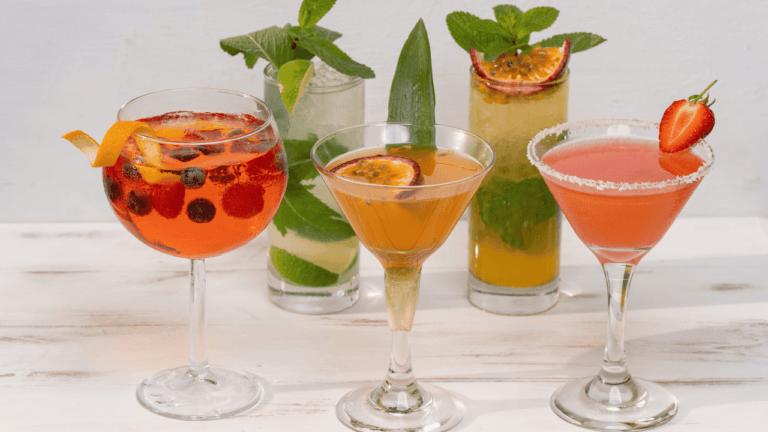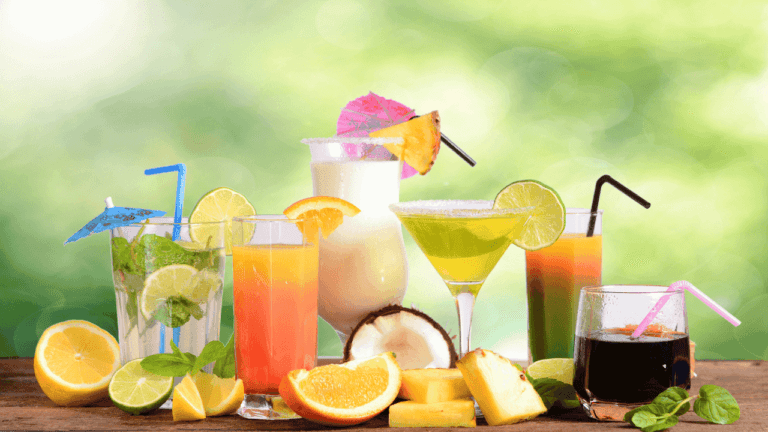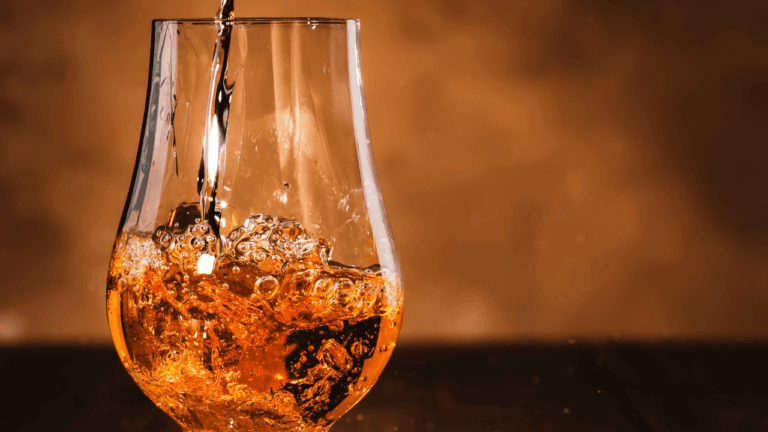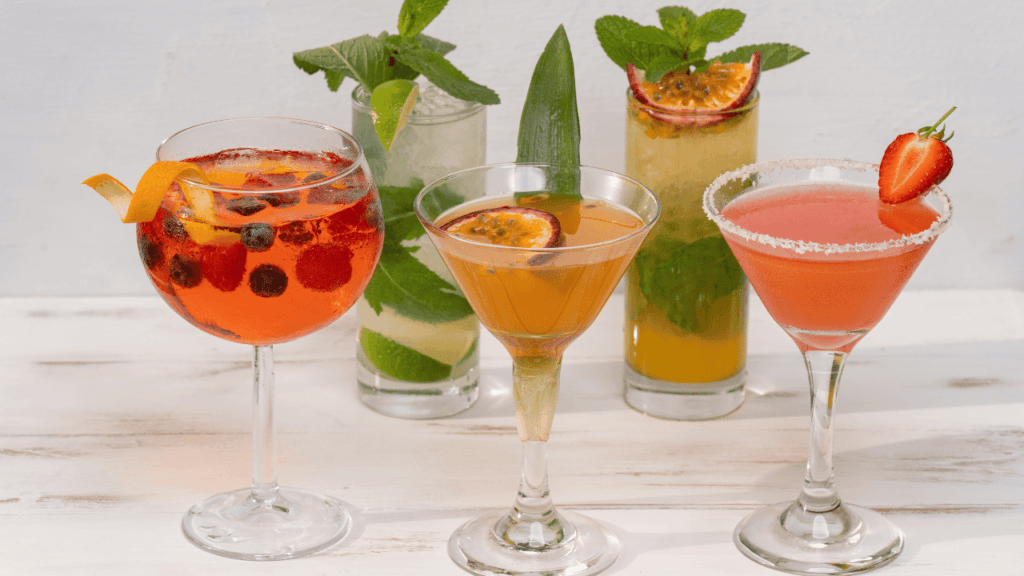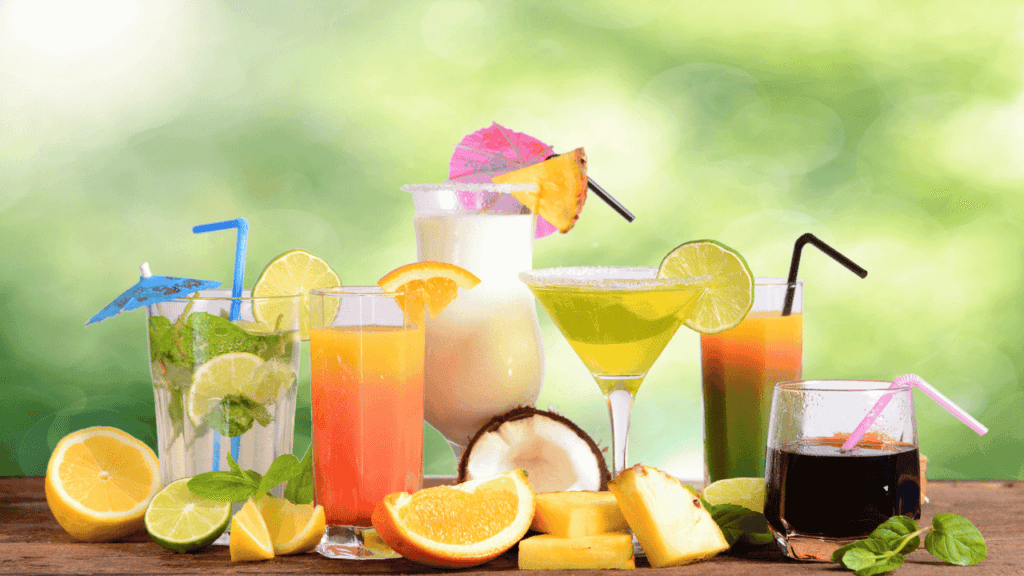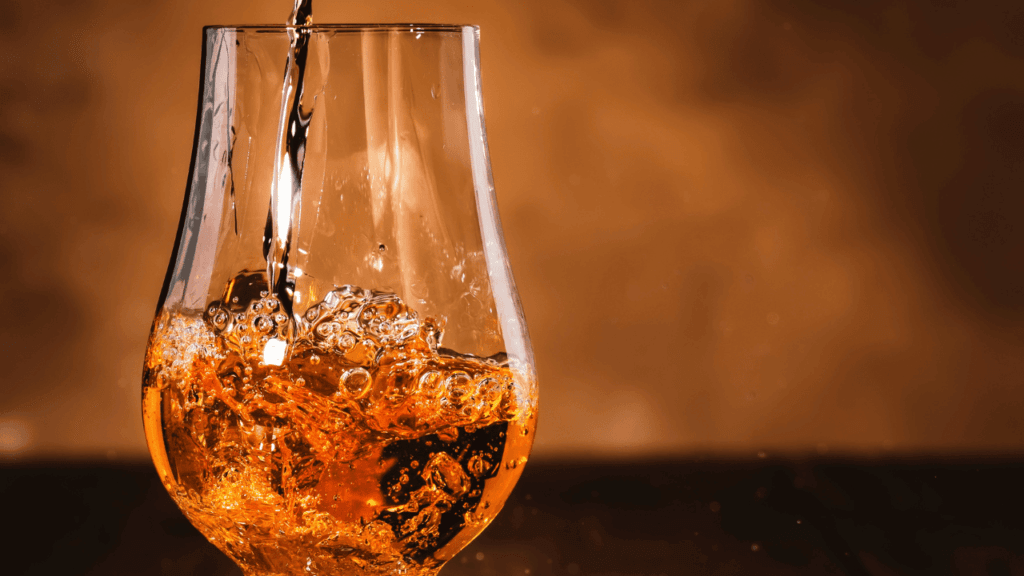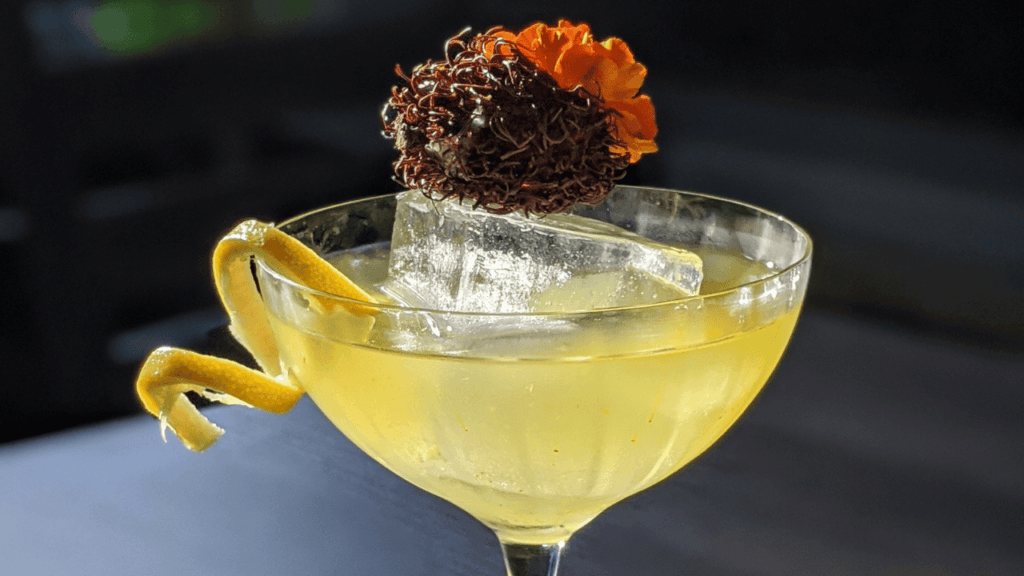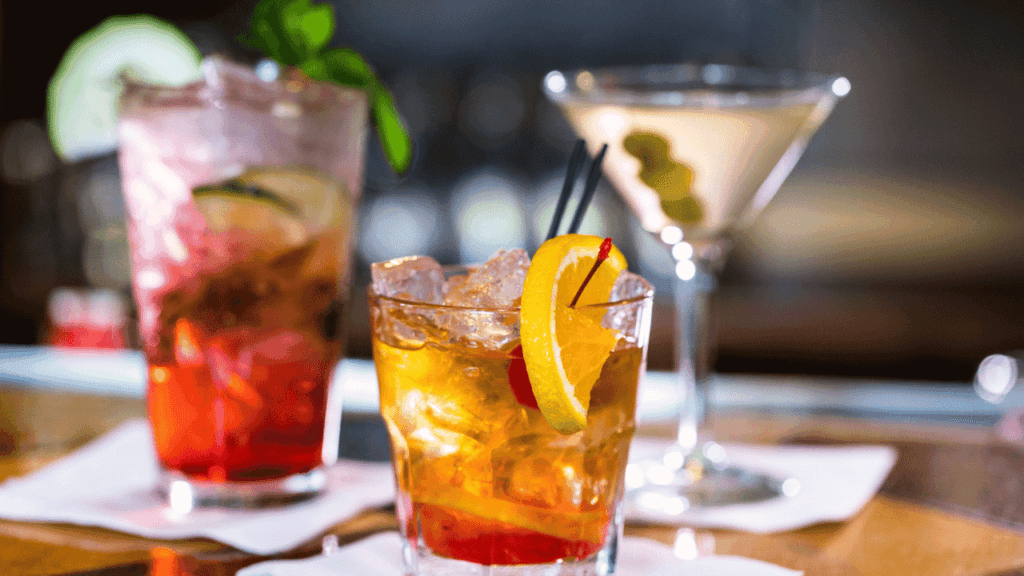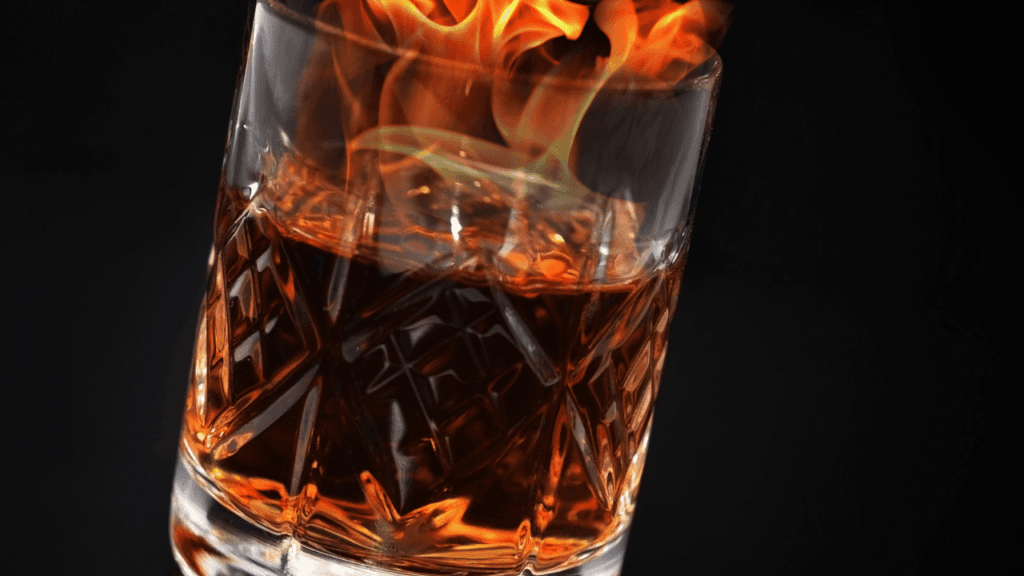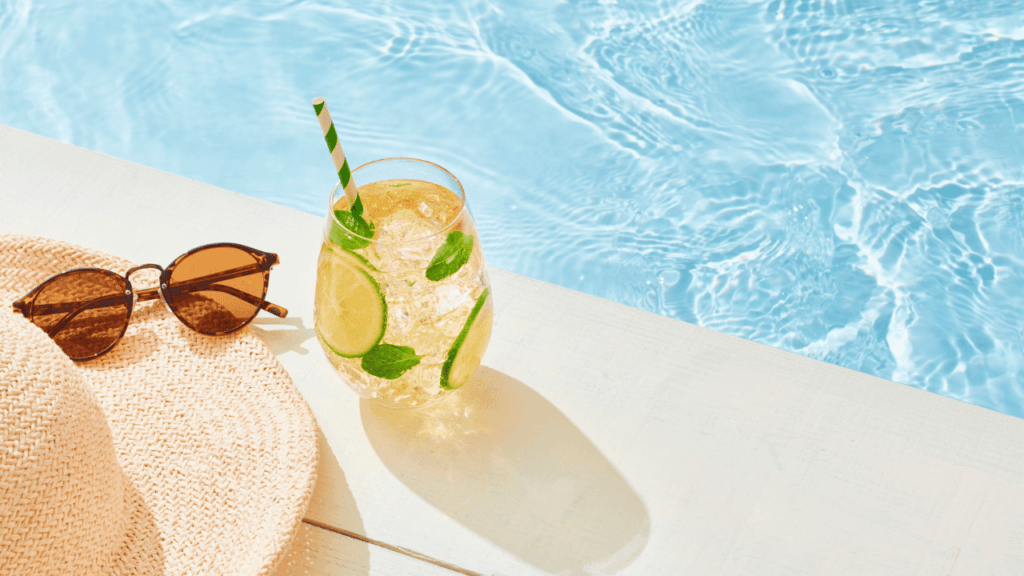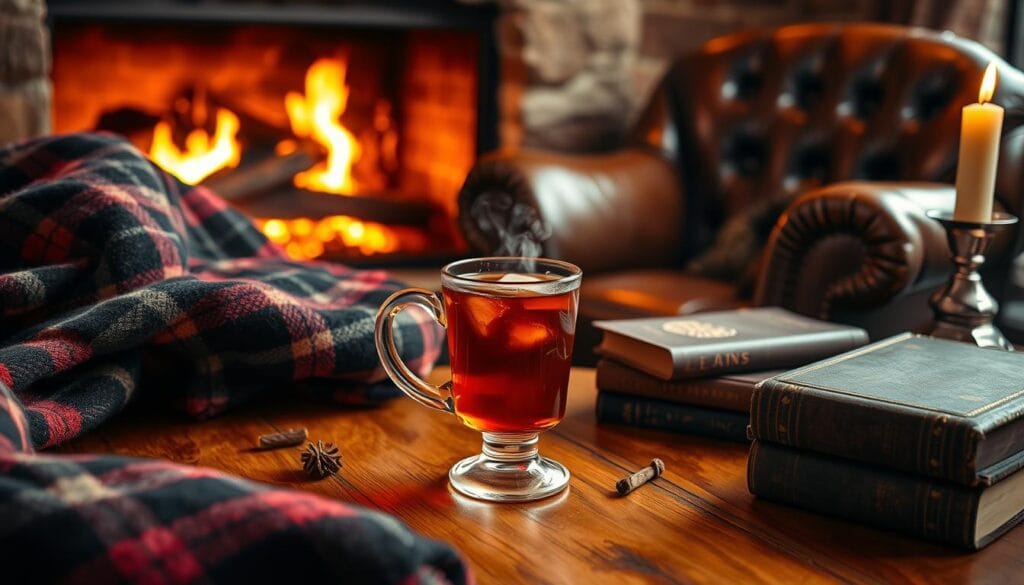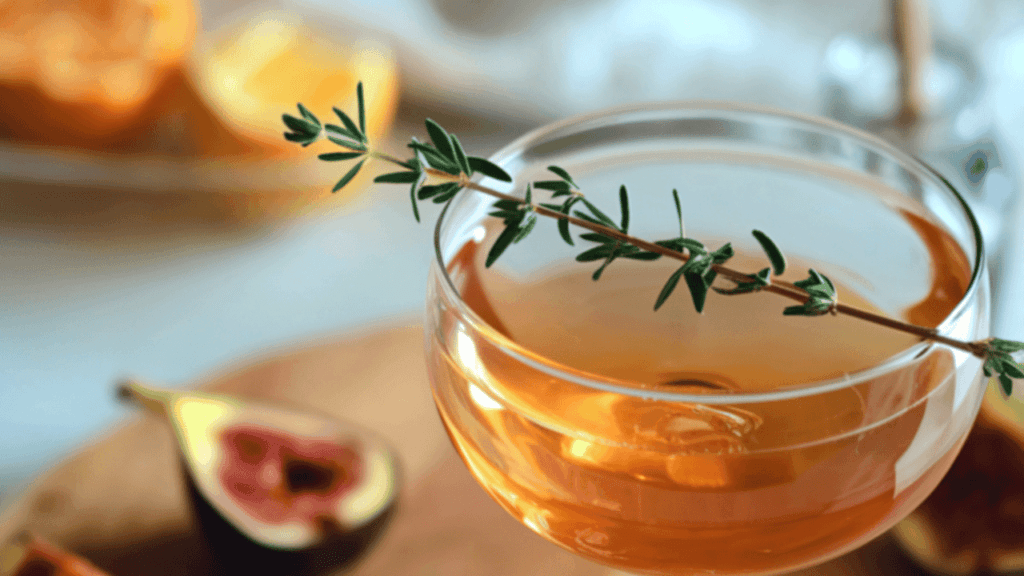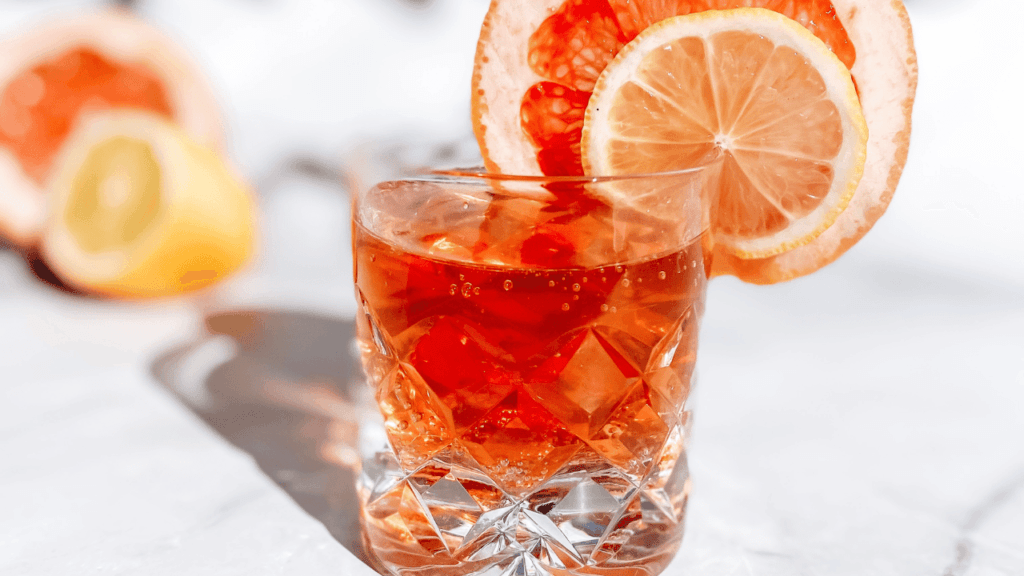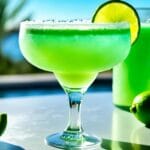Regional Variations of Scotch Cocktails has long been prized for sipping, but its regional styles also reshape how we mix drinks. From Islay peat smoke to Speyside fruit and floral notes, each zone offers a clear flavor map that guides cocktail choice.
Brand leaders like The Macallan and Diageo now promote scotch whisky as a versatile base for modern drinks. Historic shifts — the Excise Act and the Coffey still — widened access and helped spirits move from medicine cabinets to cocktail menus.
Expect a practical, region-by-region tasting tour in a glass. You’ll see how smoky malts suit stirred, spirit-forward recipes while light Lowlands styles lift highballs and shaken citrus builds. The Rob Roy, Penicillin, Rusty Nail, and Blood and Sand anchor the canon before we remix them for seasons and occasions.
Key Takeaways
- Use regional profiles to match whisky to a cocktail format.
- Smoky, floral, honeyed, and coastal notes suggest different recipes.
- Modern brands endorse Scotch in mixed drinks, not just neat pours.
- Historical changes expanded availability and inspired mixology.
- Recipes in the guide include glassware, technique, and seasonal tips.
A world tour in a glass: how Scotch shapes cocktail styles
Think of Scotland as a tasting map: each whisky zone hands bartenders a different set of tools. Islay’s peat brings smoke; Speyside adds fruit and florals; Highlands deliver honeyed spice; Islands lend salt and sea; Lowlands offer light, easy body.
That range lets a bar build a menu that feels like travel. Smoky malts suit bold sours and floats. Fruity, floral malts lift citrus builds and vermouth-led classics.
Think of peated expressions as a seasoning: a rinse or float adds aroma without overwhelming. Highland depth works best in silky stirred drinks where texture and sweetness balance fortified wines and herbal liqueurs.
- Islands and coastal malts: long, soda-forward drinks with saline lift.
- Speyside: citrus sours and Rob Roy-style harmony.
- Highland: spirit-forward coupes and Old Fashioned reinterpretations.
“Swap one region and the same drink can become smoky, floral, or briny — it’s a simple way to redesign a classic.”
Diageo and The Macallan ambassadors stress that knowing a whisky’s profile helps pick modifiers—ginger, honey, amaro, or vermouth—so every drink becomes a deliberate pairing.
From medicine to mixology: a brief history that flavors today’s drinks
Across two centuries, legal and technical shifts turned whisky into a cocktail staple.
Scotch’s recorded trail begins in 1494, but the modern era really moves in the 1800s. The 1823 Excise Act made distilling lawful and predictable, which helped producers focus on quality and supply.
The 1831 Coffey continuous still changed volume and consistency. Aeneas Coffey’s design let distillers make steady batches, so bartenders could rely on repeatable flavor for drinks.
The 1909 Spirits Act then protected scotch whisky identity. That legal clarity gave bartenders confidence that a named style met baseline standards for mixing.
During Prohibition (1920–1933), imported whisky became a luxury in speakeasies. In places like New York, the Rob Roy took root and showed how a whisky-based drink could join the American canon.
“Scarcity bred simplicity: strong, straightforward builds became a practical and stylish choice.”
- Medicinal tonics and naval rations shifted into social sips.
- Law and technology increased consistency for repeatable recipes.
- The era’s modern spirit trends paralleled gin’s rise in cocktail culture.
Today’s cocktails inherit that work: better distillation, steady supply, and codified standards let classic and new recipes perform reliably. Understanding these milestones explains why certain styles and techniques still shape how we mix.
Regional Variations of Scotch Cocktails
Knowing how each whisky belt behaves helps you choose the right mix and modifier.
Mapping flavor profiles to drink styles
Islay’s peat gives smoke-driven intensity best for smoky sours and floats. Speyside brings orchard fruit and florals that suit bright sours and vermouth-led stir-downs.
Highland malts add honeyed spice for spirit-forward coupes. Islands offer saline, coastal notes that pair with coastal highballs and aperitifs. Lowlands shine in delicate, long drinks.
When to use single malt vs blended Scotch in cocktails
Blended scotch often wins in highballs, Rusty Nails, and two-ingredient builds for consistency and cost control.
Single malt is best when a bartender wants a distinct distillery character to shape a stirred classic like a Bobby Burns.
“Taste your base neat first; garnish and modifiers should amplify its best cues.”
- Peated malt + ginger, honey.
- Speyside + citrus, sweet vermouth.
- Highland + Bénédictine, amaro.
Islay’s smoky signatures: peated pours that power bold cocktails
A little peat goes a long way; on Islay it becomes a seasoning for bold drinks. Use a measured float or rinse so smoke enhances rather than overwhelms. Start small and build to taste.
Penicillin is a perfect example: 2 oz blended scotch, 0.75 oz lemon, 0.75 oz honey-ginger syrup, and a 0.25 oz Islay single malt float. The tiny Islay topper adds aromatic smoke while leaving the ginger and honey bright.
Agave-adjacent twists and coastal sours
The Lagavulin Smoky Spicy Margarita (batch: 10 oz Lagavulin 16, 4 oz lime, 4 oz jalapeño agave) shows how maritime smoke pairs with citrus and heat. The Laphroaig Paloma blends grapefruit juice, lime, simple syrup, soda and a smoked-salt rim for tart, saline balance.
Smoked highballs and pairing tips
For long drinks, pair saline notes with soda and citrus and add a small peated float to heighten aroma. Grapefruit, lemon, and ginger keep smoke lively. Use big, clear ice to slow dilution and preserve texture.
- Measure smoke additions carefully—start light.
- Try different Islay whisky houses; iodine vs sweet smoke shifts impression.
- Soda choice and fresh juice change how peat reads in the glass.
“A little peat can turn a bright cocktail into something memorably savory and coastal.”
Speyside’s fruit and floral lane: elegant, balanced builds
Speyside brings orchard fruit and soft florals that lift bright, refined whisky builds. This region’s light sweetness works with citrus and gentle modifiers to keep drinks airy and balanced.
Whisky Sours with orchard lift: The Glenlivet approach
The Glenlivet Whisky Sour (50 ml The Glenlivet 12, 25 ml lemon juice, 12 ml simple syrup, optional 12 ml egg white) shows how fruit-forward malt and fresh citrus marry. Add egg white for a silky texture that smooths edges without hiding the flavor.
Vermouth-forward classics: Rob Roy and Bobby Burns nuance
Speyside malts pair naturally with sweet vermouth. A Rob Roy (2 oz blended Scotch, 1 oz sweet vermouth, 2 dashes Angostura) softens and amplifies red-fruit tones. The contrast with a Bobby Burns (2 oz Highland malt, 0.75 oz sweet vermouth, 0.5 oz Bénédictine) is the extra herbal liqueur that adds depth while keeping whisky central.
- Use fresh lemon and high-quality vermouth kept cold to preserve brightness.
- Choose coupes or Nick & Nora glassware to focus aromatics and presentation.
- Explore sherry-finished single malt for richer dried-fruit complexity in stirred recipes.
“Subtle orange oil expressed over the glass ties citrus and Speyside fruitiness together.”
Balance sugar sparingly: Speyside’s natural sweetness often needs less syrup. For more recipes and inspiration, see popular scotch cocktail recipes.
Highland depth and honeyed spice: spirit-forward staples
Highland malts bring a warm core that makes stirred, spirit-forward drinks sing. These whiskies show honeyed sweetness, baking spice, and a full mouthfeel that suit low-ice formats and coupes.
Highland malt in a coupe: Bobby Burns structure
The Bobby Burns follows Dale DeGroff’s balance: 2 oz Highland malt, 0.75 oz sweet vermouth, 0.5 oz Bénédictine. Stir with ice and strain into a chilled coupe.
Why it works: the malt scotch brings weight, vermouth adds red-fruit warmth, and Bénédictine supplies herbal layers that unfold as you sip.
Old Fashioned, reinterpreted with Highland backbone
Try a Scotch Old Fashioned: 2 oz blended Scotch, 0.25 oz simple syrup (or 1 tsp sugar), 2 dashes Angostura. Stir over ice and serve on a single large cube.
Measured stirring creates a clear, viscous texture that frames the whiskey and lets bitters and sugar play without masking nuance.
- Technique: use a chilled glass and one large cube to limit dilution.
- Garnish: express orange or lemon oil; keep it minimal to keep the whisky center stage.
- Try: side-by-side tasting of Highland distilleries to hear how honey vs. spice shifts flavors.
- Modifiers: subtle amaro swaps can modernize the Bobby Burns while preserving its triangular architecture. Consider cask influence—ex-bourbon leans vanilla, sherry leans dried fruit—when choosing sweet vermouth or liqueur.
“Measured stirring achieves the chill and dilution that preserves texture and clarity.”
Lowlands, Islands, and Campbeltown: light, coastal, and briny profiles
Coastal belts deliver light, saline whispers that nudge a drink toward the sea. Lowland malts work well in long, tea-forward builds. Islands bring mineral and sea spray. Campbeltown adds a briny, savory edge best in stirred aperitifs.
Light-bodied refreshers: tea, soda water, and citrus
For Lowlands, make a highball with chilled tea, fresh citrus, and a gentle measure of malt. Use long, narrow glassware to keep bubbles and aroma. Add a thin lime wheel to brighten without stealing focus.
Coastal complexity in stirred aperitifs
Islands shine with cold soda water and a hint of saline. Add a few drops of saline solution in tiny increments to tune minerality.
Campbeltown’s savory notes pair with dry vermouth or a light amaro. Stir short, strain into a coupe, and let minerality sit under subtle bitterness.
- Contrast Lowlands’ gentler profile with island salinity and Campbeltown brine to set the drink direction.
- Keep soda and water cold with quality ice to protect texture and lift.
- Use restraint: these regions reward subtlety, not heavy modifiers.
“Let the malt’s maritime cues lead; modifiers should nudge, not drown.”
Classic Scotch cocktail canon: recipes that defined the category
Mastering a handful of time-tested recipes gives you a reliable way to showcase blended and single malt flavors. These builds teach balance, technique, and garnish choices that reward practice.
Rusty Nail, Rob Roy, Blood and Sand
Rusty Nail: 2 oz blended scotch whisky + 0.5 oz Drambuie. Stir in a rocks glass over ice. The Drambuie liqueur adds honeyed herbs and creates a two-ingredient classic.
Rob Roy: 2 oz blended Scotch, 1 oz sweet vermouth, 2 dashes Angostura. Stir and strain up. This drink traces to the Waldorf Astoria and shows a Manhattan lineage that frames whisky with vermouth and bitters.
Blood and Sand: 0.75 oz each blended Scotch, sweet vermouth, Cherry Heering, and orange juice. Shake and strain into a chilled coupe. The equal parts formula balances cherry and citrus into a surprising harmony.
Presbyterian, Mamie Taylor, and Scotch Sour
Presbyterian: 2 oz Scotch, 2 oz club soda, top with ginger ale. Light and fizzy.
Mamie Taylor: 2 oz Scotch, 0.5 oz lime, top with ginger ale. Bright and simple.
Scotch Sour: 2 oz blended Scotch, 1 oz lemon, 0.5 oz simple syrup. Shake, strain over ice. Add egg white for silk or swap honey/cinnamon syrups for warmth.
“Chill your glass for stirred drinks and use fresh ice for shaken builds to control dilution.”
- Start with blended bases for consistency, then explore single malts for nuance.
- Garnish cues: orange peel for Rob Roy and Blood and Sand; brandied cherry optional.
- Precise shaking integrates juice and tames acidity while preserving whiskey character.
Regional Variations of Scotch Cocktails: from Waldorf Astoria to modern revival
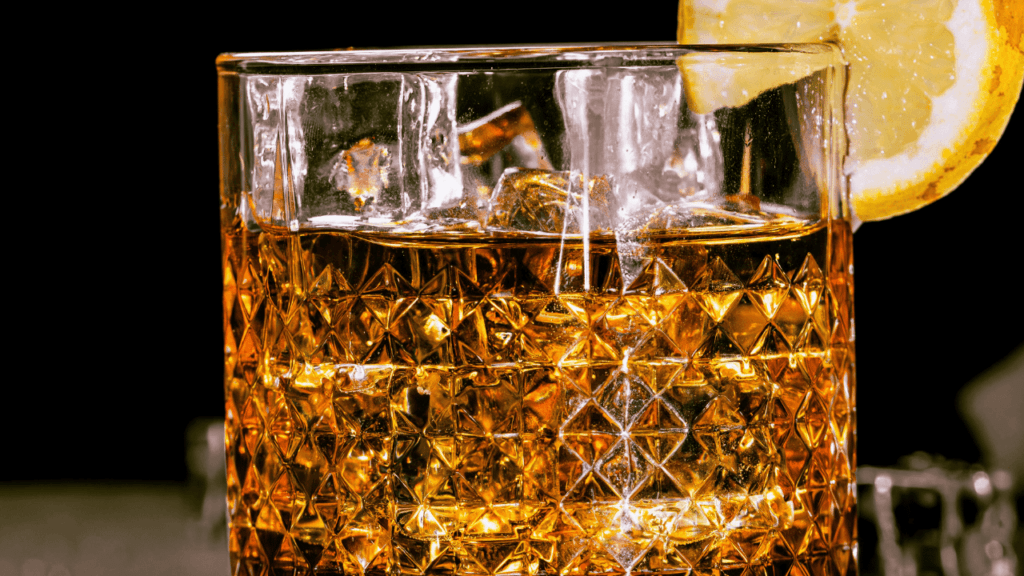
New York’s hotels and bars helped turn a Scotch-and-vermouth sip into a lasting American classic. The Rob Roy first appeared at the Waldorf Astoria in the late 1800s. It swapped rye for malt and echoed the Manhattan’s build: whisky, sweet vermouth, and bitters.
The switch from rye to malt changes texture and aroma. A Scotch base deepens honey and smoke notes. That shift alters how the same cocktail feels on the palate.
Rob Roy’s Manhattan lineage
The Rob Roy kept the Manhattan’s structure but showcased Scotch character. During New York’s cocktail revival, bartenders revived and reworked it. Modern bars now offer variations that play with vermouth and bitters.
- Try different sweet vermouths to tune fruit and herb balance.
- Look for Scotch swaps in Boulevardiers and other standards at local bars.
- Visit classic hotel bars and speakeasies to taste historic and modern takes.
“Contemporary ambassadors encourage using Scotch freely as a mixing whisky, not just for neat pours.”
Brands like Diageo and The Macallan now champion Scotch in city menus. New York’s role is both origin story and ongoing inspiration for remixing tradition.
Modern remixes: contemporary brands and craft twists
Modern remixes show how a single dram can inhabit a stirred coupe, a tall fizzy glass, or a crushed-ice julep.
Bowmore Boulevardier and Off The Cliff
Bowmore Boulevardier reworks a 1920s classic. Equal parts Bowmore 12, Knob Creek Bourbon, and Amaro Nonino with 3 dashes Jerry Thomas bitters. Stir, strain up, and finish with orange oil for smoky-amaro depth.
Off The Cliff is bracing and bitter: Jura 10, Bonal Gentiane-Quina, Cynar, a touch of Sfumato and two saline dashes. Stir, serve in a Nick & Nora and express lemon to wake minerality.
Hibiscus Highball and The Peacock
The Hibiscus Highball pairs Dewar’s 12 with St-Germain, lemonade, and hibiscus tea for a floral, sessionable long drink.
The Peacock uses The Macallan Harmony Vibrant Oak with Akashi-Tai Umeshu and butterfly pea tea over crushed ice. Stir to watch color shift and highlight delicate fruit notes.
Frozen formats: Oban Frozen Penicillin
Try an Oban Frozen Penicillin for summer: Oban 14, lemon, ginger-honey syrup and crushed ice. Blend and garnish with candied ginger for refreshing spice and coastal malt.
“Small measures—peat floats, bitter liqueurs, and saline—can redefine balance without masking the base.”
- Glass choice (Nick & Nora, coupe, Collins) guides aroma and sight.
- Single malt scotch selection shifts a drink’s center—smoky choices intensify; fruit-forward ones refine.
- Manage sweetness from liqueur and lemonade; use measured saline to lift mouthfeel.
Ginger, citrus, and honey: the flavor trifecta in Scotch cocktails
Ginger, lemon, and honey make a reliable backbone for whisky mixes. Spice brightens smoked notes, citrus lifts weight, and honey smooths harsh edges. This trio is easy to balance and beginner-friendly.
Penicillin’s blueprint: lemon juice and honey-ginger syrup
The classic Penicillin uses muddled fresh ginger, 2 oz blended whisky, 0.75 oz lemon juice, and 0.75 oz honey-ginger syrup, finished with a 0.25 oz Islay float. Lemon juice cuts sweetness while the syrup brings warmth and clarity.
Tip: strain the syrup well so the drink stays bright and clear. Adjust sweet-sour to suit a peaty or sweet base.
Hot and cold takes: Hot Toddy vs highball builds
A Hot Toddy (2 oz scotch whisky, 0.5 oz lemon, a spoon of honey, 1–2 oz hot water, and spices) leans into comfort. Heat amplifies honey and softens bite.
Cold highballs—Presbyterian or Mamie Taylor—use ginger ale or club soda and citrus for brisk refreshment. Fast build and cold ice preserve fizz and lift.
- Choose honey-ginger syrup for depth; use simple syrup when you want neutrality.
- Use fresh-squeezed lemon, real honey, and strained ginger syrup for best results.
- Try an Islay float for smoke or a Speyside base for fruit-forward balance.
“Candied ginger or an expressed lemon peel adds aroma without extra sweetness.”
Manage temperature and dilution: hot drinks need more acid to avoid cloying sweetness; cold drinks benefit from very cold glassware and quick assembly. For new sippers, this trifecta is an approachable gateway into mixing with scotch whisky.
Regional Variations of Scotch Cocktails: how modifiers shape your sip
A well-chosen modifier can lift a whisky’s hidden notes and change a drink’s direction. In stirred recipes, small measures add structure, aroma, and balance without masking the base spirit.
Vermouth, Bénédictine, and amaro in stirred drinks
Sweet vermouth provides body and gentle bitterness that complements grain and cask notes. In a Rob Roy it frames the whiskey with red-fruit and herb cues.
Bénédictine brings herbal-honey depth. In a Bobby Burns it rounds edges and adds aromatic complexity that unfolds as you sip.
Amaro choices like Amaro Nonino add citrus peel, spice, and bitter lift. Use them sparingly to modernize a classic without overwhelming the original profile.
Cherry liqueur and orange in a balanced blend
The Blood and Sand uses equal parts Scotch, sweet vermouth, Cherry Heering, and orange juice. That 1:1:1:1 formula creates harmony: cherry liqueur gives depth while OJ supplies freshness.
- Measure modifiers carefully—tiny changes alter the flavor map.
- Keep vermouth fresh: refrigerate and open small bottles to preserve aroma.
- Match modifiers to the whisky’s profile; extend, don’t mask, the core flavor.
- Chilled glassware preserves texture for stirred, spirit-forward drinks.
“Mastering modifiers unlocks consistent, bar-quality scotch cocktail results at home.”
Blended Scotch vs single malt: choosing the right base spirit
Picking between a blended base and a single malt is the fastest way to steer a cocktail’s shape and mood.
When blends shine: highballs and two-ingredient builds
Blended scotch whisky is prized for consistency and value. It makes long, soda-forward drinks like the Presbyterian and Mamie Taylor simple and reliable.
Use blended scotch in two-ingredient recipes such as the Rusty Nail where balance and repeatability matter. A house can set specs and hit them night after night.
When single malts sing: nuanced, stirred classics
Single malt and single malt scotch lift stirred, aromatic recipes. Pick a peated expression for smoky floats or a fruit-forward malt for vermouth-led Rob Roy variations.
- Taste the scotch whisky neat first to learn its profiles.
- Stronger malts tolerate longer stir times; lighter bases suit soda and highballs.
- Mix both on a menu: a blended highball for entry and a single malt coupe for depth.
“Both categories belong in a well-stocked toolkit; choose the base to match the drink’s structure.”
For a deeper comparison, read a thorough guide to single malt vs blended scotch to fine-tune selections for your bar. A smart spirits choice is the quickest way to align intent, flavor, and cost in any scotch cocktail.
Ice, dilution, and technique: shaking, stirring, and sodas
Good technique controls texture. How you chill, move, and top determines whether a cocktail reads silky or bright. Aim for repeatable steps so every glass tastes the same.
Stirred and boozy vs shaken and citrus-forward
Stirred drinks like the Rob Roy and Bobby Burns keep clarity and mouthfeel. Stir 20–30 seconds to chill and dilute without clouding the spirit.
Shaken builds (Scotch Sour, Blood and Sand) need force to integrate juice and aerate. Shake 10–15 seconds and strain to avoid over-dilution.
Club soda, soda water, and ginger ale distinctions
Club soda often has minerals; soda water is plain carbonated water; ginger ale is sweet and flavored. Each alters balance: club soda lifts minerality, soda water keeps things neutral, and ginger ale adds sweet spice.
- Use cracked ice for quick chill when shaking.
- Choose big, clear ice cubes for slow dilution in whiskey-forward serves.
- Build highballs last: add cold soda gently to keep carbonation.
- Chill the glass to shorten stir time and limit extra ice melt.
“Consistent timing and ice quality are the fastest ways to make bar-grade drinks at home.”
Seasonal sips: winter warmers to summer coolers
Cold months call for creamy, spiced measures; hot days beg for citrus, soda, and tea-forward refreshers.
Morning Glory Fizz and Atholl Brose for the cold months
Morning Glory Fizz makes an effervescent winter brunch option. Use 2 oz blended scotch, 0.75 oz lemon, 0.5 oz simple syrup and 1 egg white. Add dashes of absinthe, dry shake, then shake with ice and top with club soda for lift.
Atholl Brose is a historic, warm after-dinner treat. Mix scotch with steel-cut oatmeal, heavy cream, and honey. Serve slightly warmed for holiday and après-dinner service.
Palomas, highballs, and julep-style builds for heat waves
Summer calls for Palomas and light highballs. Try a Laphroaig Paloma with grapefruit, lime, and soda for coastal brightness. Hibiscus tea adds color and gentle tannin to a Dewar’s highball. The Peacock julep-style uses butterfly pea tea and The Macallan for floral aroma and striking hue.
- Tea infusions add aroma and body without extra weight.
- Use lime or citrus juice to sharpen refreshment.
- Soda stretches drinks and lowers perceived ABV on hot days.
“Adjust sweetness seasonally—richer in winter, drier and brighter in summer.”
Serving tips: frost glassware for summer highballs; pre-warm mugs for winter recipes. For gatherings, batch-friendly recipes like spicy margarita-style punches keep service easy while preserving whisky character.
Try these region-forward recipes at home
Turn tasting notes into practice — these simple, region-led recipes make it easy to compare styles glass to glass.
Islay-forward: Penicillin with Laphroaig float
Combine 2 oz blended scotch, 0.75 oz lemon juice, and 0.75 oz honey-ginger syrup. Shake with ice and strain into a chilled rocks glass over fresh ice.
Float 0.25 oz Laphroaig on top for smoky aroma. Tip: strain ginger solids for a clear pour.
Speyside-forward: The Glenlivet Whisky Sour
Mix 50 ml The Glenlivet 12, 25 ml lemon juice, and 12 ml simple syrup. Add an optional egg white; dry shake, then shake with ice and serve in a coupe.
Highland-forward: Bobby Burns
Stir 2 oz Highland malt, 0.75 oz sweet vermouth, and 0.5 oz Bénédictine with ice. Fine-strain into a Nick & Nora to showcase honeyed spice and herbal liqueur depth.
Blended-friendly: Rusty Nail & Hibiscus Highball
Rusty Nail: stir 2 oz blended whiskey with 0.5 oz Drambuie over a large ice cube for a slow-sipping two-ingredient classic.
Hibiscus Highball: combine 1 oz Dewar’s 12, 0.75 oz St-Germain, 2 oz lemonade, quick shake, and top with unsweetened hibiscus tea over ice in a tall glass.
- Measure with a jigger for consistency.
- Short, efficient shakes for sours; gentle stirring for spirit-forward clarity.
- Taste and adjust acidity or sweetness to match the chosen whisky.
“Pre-chill stirred glassware and express citrus oils over the surface to lift aroma.”
Conclusion
Regional Variations of Scotch Cocktails,
Classic recipes and modern remixes together show how a single dram can span styles and seasons.
Scotch’s regional profiles unlock a spectrum of scotch cocktails, from smoky sours to bright highballs and silky stirred drinks.
Historic shifts like the Excise Act, the Coffey still, and Prohibition helped make consistent, mixable whisky available for bars and home bartenders.
Taste the spirit first, then choose modifiers—vermouth, Bénédictine, amaro, ginger, citrus, or honey—to lift what’s already there.
Technique matters: ice, dilution, shaking vs stirring, and soda choice change texture and balance every time.
Start simple: try a rob roy, a rusty nail, a old fashioned riff, and one modern remix to feel the range.
Seasonally, favor Hot Toddies and Morning Glory Fizz in winter, and Palomas, highballs, or julep-style builds in summer.
Scotch is more than sipping spirits; it is a creative, enduring base for cocktail exploration. Experiment across regions to grow your home bar and find favorites.


